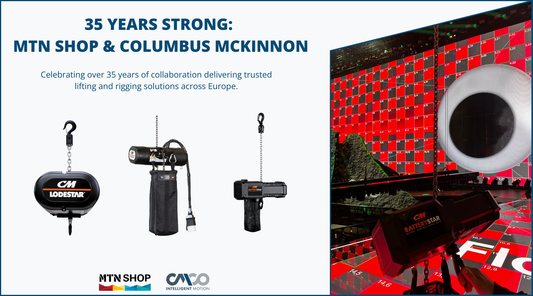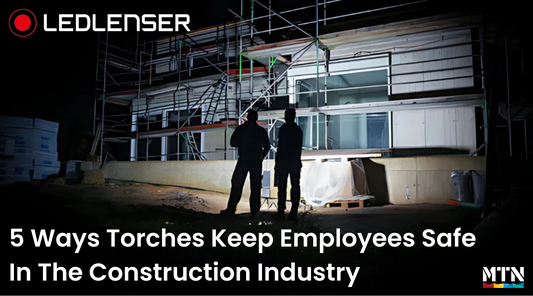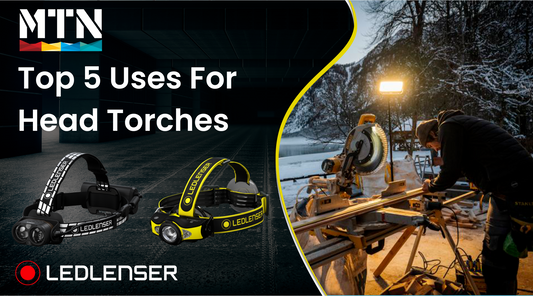ABC's of Fall Protection
Article
While fall protection is a simple concept in theory, it can be complicated in practice. With highly diverse products in respect to product design, performance and compatibility, choosing the correct fall protection equipment that matches your needs can be a difficult task. Through the ABC's of fall protection, we will take you through the primary types of fall protection products as well as the applications in which they are used.
What are the ABC's of Fall Protection?
At its most basic level, fall protection can be broken down into: Anchors, Bodywear & Connectors. Combined, these are the 3 components needed to assemble a complete Personal Fall Arrest System (PFAS).
A - Anchorage Connector
The Anchorage Connector is the base of any personal fall arrest system. This is the device in which you connect to and is the first component in your system that begins to arrest your fall. An anchor, on the other hand, is the structure that the anchorage connector is connected to e.g. roof, wall etc.

Roof Top Anchor

Hinged Roof Anchor

Toggle Bolt Anchor
Another type of anchor is called a Horizontal Lifeline. This consists of a heavy-duty rope or cable that is connected between two independent anchorage connectors. They function as an extended lifeline that can be connected to by multiple workers.
B – Body Harness
For the purpose of fall protection applications, a full-body harness is the only piece of equipment permitted to be worn. The primary components of a full-body harness are webbing, buckles and D-rings.
Webbing
Webbing makes up the bulk of the harness. Besides colour, there is very little difference between harness webbing functionality. Some exceptions include water repellent, UV resistant and flame retardant webbing.
Buckles
There are 4 main types of buckles that can be found on a safety harness; Tongue Buckles, Pass-Through, Quick Connect and Roller Buckles.
Type 1: Tongue BuckleThe Tongue Buckle is one of the most popular buckle designs and is essentially the same buckle type as what you would find on a belt. It can be easily adjusted by pulling the strap through the buckle and locking it in place by connecting the tongue through a grommet on the strap.

The Pass-Through buckle is popular among many workers due to its simple design. It is composed of two metal plates, one passing through the other, to create a secure connection while working at height.

The Quick Connect buckle is similar to that of a seatbelt in a car. Many workers prefer this buckle type as it is extremely efficient and requires the least amount of effort to make a secure connection.

The Roller Buckle is used to adjust harness webbing and is configured in a similar way to a strap on a backpack. Extremely simple to use, these buckles are ideal for accommodating workers of different sizes. Many harnesses on our site feature a roller buckle design.

D-rings
D-rings are where the connector attaches to the harness. Potential D-ring locations include dorsal (back), sternal (chest), side and shoulders. Every full-body harness is designed with a dorsal D-ring as it is the only permitted attachment location for fall arrest applications.

C – Connector
The connector is the piece of equipment that attaches the anchorage connector to the full-body harness. Connectors are designed with a variety of hook configurations that determine which anchorage connectors are compatible with the connector. The most common hook types are snap hooks, rebar hooks and carabiners.
Connectors primarily function to do two things:
- Absorb sources of fall arrest in the event of a fall
- Limit the maximum working radius around the anchor point
The connecting component plays a key role in not only stopping the fall, but in reducing harm caused by the fall itself. As a worker is subjected to a dramatic jolting force at the moment their fall is arrested, the shock absorption of the connector is essential.
Connector Categories
Lanyards
Lanyards are the most common type of connector and fall into one of two subcategories: shock absorbing and non-shock absorbing. They are typically made from polyester, nylon webbing or cable in lengths of up to 6ft.
Shock absorbing lanyards have either an internal or external component that absorbs arrest forces in the event of a fall. These lanyards may be used in fall arrest where a worker is placed at risk of falling from a height.

Non-shock absorbing lanyards do not include this shock absorbing component and can only be used in fall restraint applications. In fall restraint, the fully extended length of the connector will not allow the user to reach any fall hazard.

**Note: All lanyards may be used in fall restraint, but only shock absorbing lanyards may be used in fall arrest**
Self-Retracting Lifelines
Self-Retracting Lifelines (SRLs) are manufactured at various lengths and function by allowing the lifeline to feed out of, and retract back into, the unit housing as the worker moves. SRLs are manufactured with either webbing or steel lifelines and are commonly available in lengths ranging from 6ft – 100ft. SRLs can also be broken into two main subcategories: Leading Edge and Non-Leading Edge.
A Leading Edge SRL may be used in applications where the risk exists for the lifeline to impact the edge of the hazard in the event of a fall.

Fall Arrest Block - 4mm Cable
Non-Leading Edge SRLs must never be used in Leading Edge applications, as such use could result in damage to the lifeline or the worker being subject to excessively high forces of fall arrest.
Vertical Lifeline
A Vertical Lifeline consists of a heavy-duty rope that attaches to an anchorage connector. The worker moves along the rope using a type of connector called a “fall arrester,” which is most commonly a rope grab or a positioning device that locks onto the rope in the event of a fall.
To check out our full range of personal fall protection gear, click here







